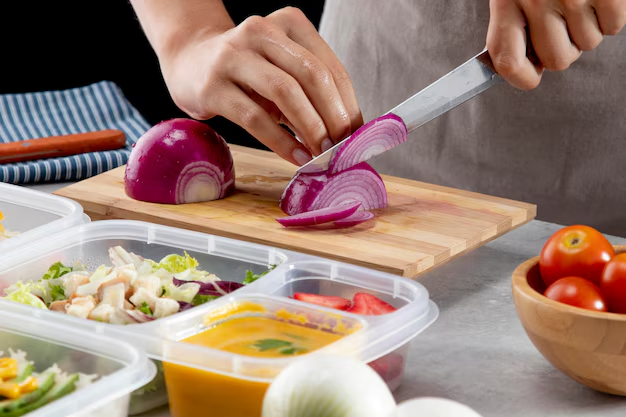How Long Can Soup Stay Fresh in Your Refrigerator?
There's nothing quite like a comforting bowl of soup, whether it's a hearty chicken noodle for a cold day or a light vegetable broth for a summer evening. But what happens when you have leftovers? Fortunately, soup is one of those versatile dishes that stores well, allowing you to enjoy it later in the week. So, how long can you safely keep soup in the refrigerator before it’s time to toss it out? Let's demystify this aspect of food storage and shelf life.
🕰 The Golden Rule for Refrigerated Soups
Many culinary enthusiasts and home cooks wonder about the optimal duration for storing soup in the fridge. A general rule of thumb is that soup can be safely stored in the refrigerator for about three to four days. This timeline ensures that the soup retains its flavor and nutritional value while minimizing the risk of bacterial growth.
Key Points:
- Temperature Control: Ensure your refrigerator is set at 40°F (4°C) or lower.
- Time Frame: Ideally, consume your soup within three to four days.
- Labeling: Mark the storage date to avoid guessing games later.
🥣 Factors Affecting Soup Longevity
Several factors can influence how long your soup remains fresh in the refrigerator:
1. Ingredients Matter
Perishable Ingredients: Soups containing seafood or dairy may spoil quicker and should be eaten within the initial two to three days.
Preservative Ingredients: Ingredients like salt, vinegar, or lemon can naturally help extend soup's shelf life.
2. Storage Containers
Airtight Containers: Using airtight containers is essential to maintaining freshness and preventing contamination.
Portion Control: Store soup in smaller, individual portions to facilitate quicker cooling and reheating, which can also help maintain quality.
3. Initial Cooking and Cooling
Proper Cooling: Rapidly cooling soup before refrigeration reduces the risk of bacterial growth. Using an ice bath or dividing the soup into smaller containers are effective methods.
🍜 Best Practices for Soup Storage
Safeguard the quality and safety of your soup with these tips:
Cool It Quickly
After cooking, it's crucial to bring the soup to room temperature promptly before refrigerating. Use an ice bath or transfer it to shallow containers to speed up the cooling process.
Utilize the Right Containers
Invest in high-quality, airtight containers or glass jars. Not only do these prevent odor absorption, but they seal in flavor, allowing for optimal freshness.
Avoid Overcrowding
Don’t pack your fridge to the brim. Ensure proper air circulation around stored containers, maintaining consistent temperatures.
🥶 Freezing Soup for Extended Storage
If you’re not planning to consume your soup within four days, freezing is a fantastic option. Properly frozen soup can last for up to three months, preserving taste and nutritional value.
Steps to Freeze Soup
- Cool Thoroughly: Ensure the soup is completely cooled before freezing.
- Choose the Right Vessels: Use freezer-safe containers or heavy-duty freezer bags. Leave room for expansion when using bags.
- Label Clearly: Mark the packaging with the date and type of soup for easy identification.
🍲 Thawing and Reheating Protocol
Thawing Safely
The best practice for thawing soup is to transfer it from the freezer to the refrigerator overnight. If you’re short on time, a microwave on a low setting or a gentle simmer on the stovetop are alternative methods.
Reheating for Optimal Flavor
When reheating, ensure the soup reaches an internal temperature of 165°F (74°C). Stir occasionally to distribute heat evenly.
🛡 Signs Your Soup Should Be Discarded
Look Out For:
- Off Odors: A sour or unusual smell is a strong indicator that the soup is no longer safe.
- Mold: Any visible mold growth is a clear sign to discard the soup.
- Unusual Taste or Texture: If the texture appears slimy or the taste off, it’s better to err on the side of caution.
It's essential to trust your senses—sight, smell, and taste are valuable tools in determining soup freshness.
📋 Quick Reference Guide: Soup Storage Tips
- Refrigerate Promptly: Aim to refrigerate within two hours of cooking.
- Monitor Smells and Signs: Use sight and smell to check spoilage.
- Eat in Order: Adopt a First In, First Out (FIFO) strategy to avoid waste.
A handy summary for your fridge door:
| 🥣 Soup Type | Refrigerator (3-4 Days) | Freezer (Up to 3 Months) |
|---|---|---|
| Chicken Noodle | ✅ Use within 3-4 days | 🛑 Up to 3 months |
| Seafood-Based | ✅ Use within 2-3 days | 🛑 Up to 2 months |
| Vegetable | ✅ Use within 4 days | 🛑 Up to 3 months |
| Cream-Based | ✅ Use within 3-4 days | 🛑 Up to 2 months |
Ensuring Your Soup Stays Delicious
Proper soup storage extends beyond just knowing the timeline. By following the steps and tips outlined here, you can maximize the shelf life of your culinary creations while ensuring they remain delicious and nutritious. With this knowledge, you’re empowered to make smart storage decisions, minimizing waste and embracing the joy of homemade soup whenever you desire.
